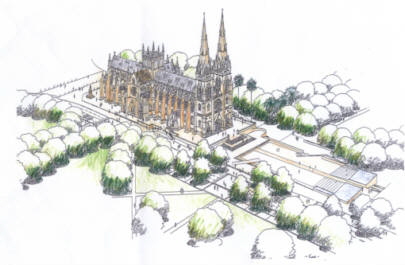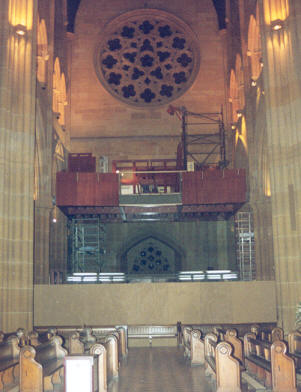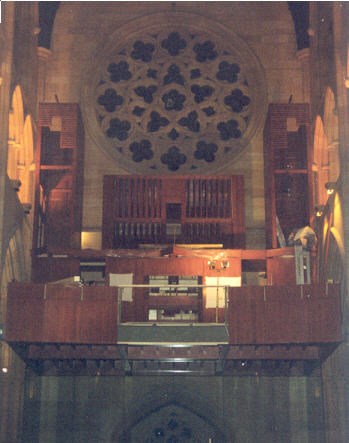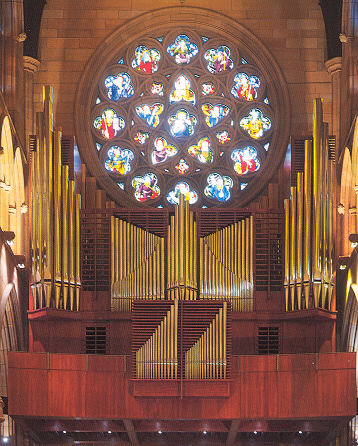This picture (above) taken after the second day of work. This picture taken a week later. |
||||||||||||||||||
Létourneau Organ The new three manual organ with 46 stops and 59 ranks built by Orgues Létourneau Ltée was commissioned in 1997 and dedicated in December 1999. This instrument sits in a newly erected gallery in the transept and its main purpose is to meet the needs of the varied liturgical and musical functions of the Cathedral. The Létourneau organ and the 1942 Whitehouse organ in the rear gallery may both be played from a new four manual mobile console located on the floor of the nave. Eric Wisden from the New South Wales Department of Public Works designed the organ case. The wide tonal and dynamic range available on the Létourneau organ meets the role of accompanying the Cathedral Choir. The 1959 Sharp organ in the triforium above the chancel was woefully inadequate in this role with only one very soft 16 foot pedal stop and two 8 foot manual stops. In contrast, the Létourneau organ has a 32 foot Contrabourdon, three 16 foot pedal stops and fifteen 8 foot manual stops. This provides greater support when accompanying the Cathedral Choir, cantors and congregation. It has string stops and principal choruses on each manual, a wide range of flutes at different pitches and English reeds including a solo Tuba stop on high wind pressure. The key action is dual; mechanical in the gallery and electrical from the mobile console. The combinations of stops are controlled by a modern programmable solid state system with 256 memories at each console. Peter Kneeshaw, the Principal Organist of the Cathedral, was the consultant and worked tirelessly on the project. This involved him in playing and assessing hundreds of new organs throughout the world and visiting many organbuilders before calling tenders. He wrote the specification and contract which he administered on behalf of the Church. Considerable effort was given to details of the tonal and console design. Care was taken to ensure that the stop list, wind pressures, pipe scaling and voicing was suitable for the requirements of the Cathedral. Orgues Létourneau who won the contract worked very closely with the consultant and the Church. They took considerable pride in delivering the instrument on time despite a number of unforseen difficulties and delays. It has been greatly admired by organists, choristers, members of the congregation and visitors for its warm tonal quality, clarity, wide dynamic range and high standard of workmanship. After years of hard work and effort the project came to fruition when the organ was dedicated by Cardinal Edward Bede Clancy on 19 December 1999 at the annual Carol Service. |



